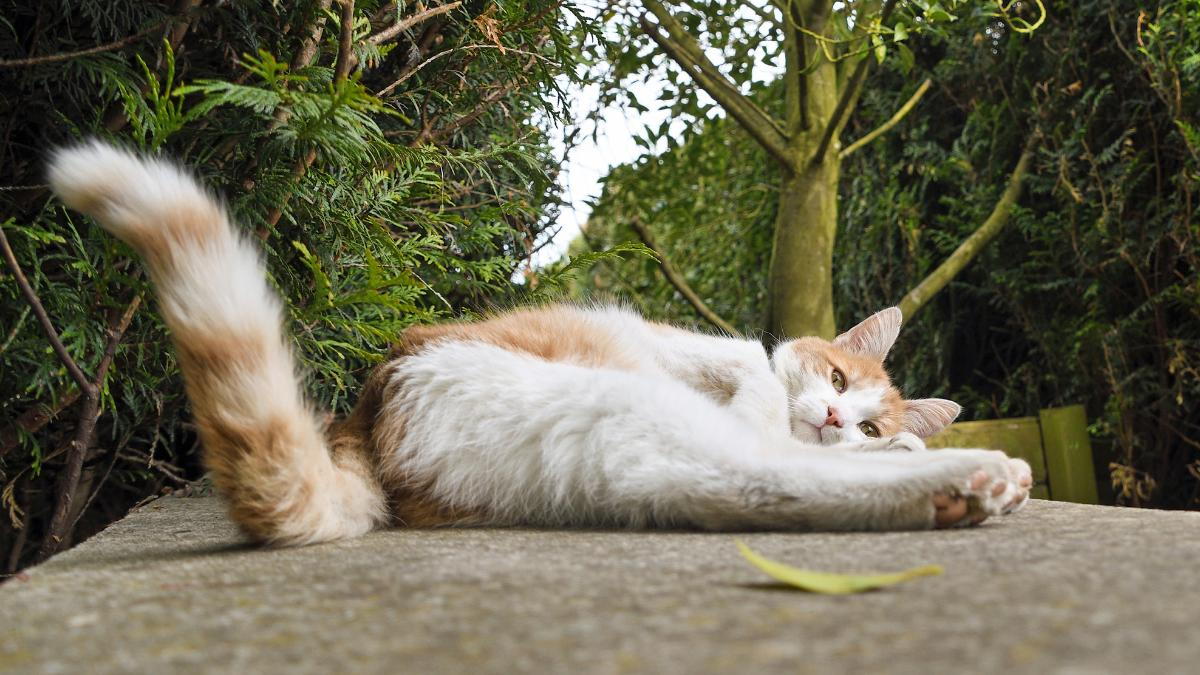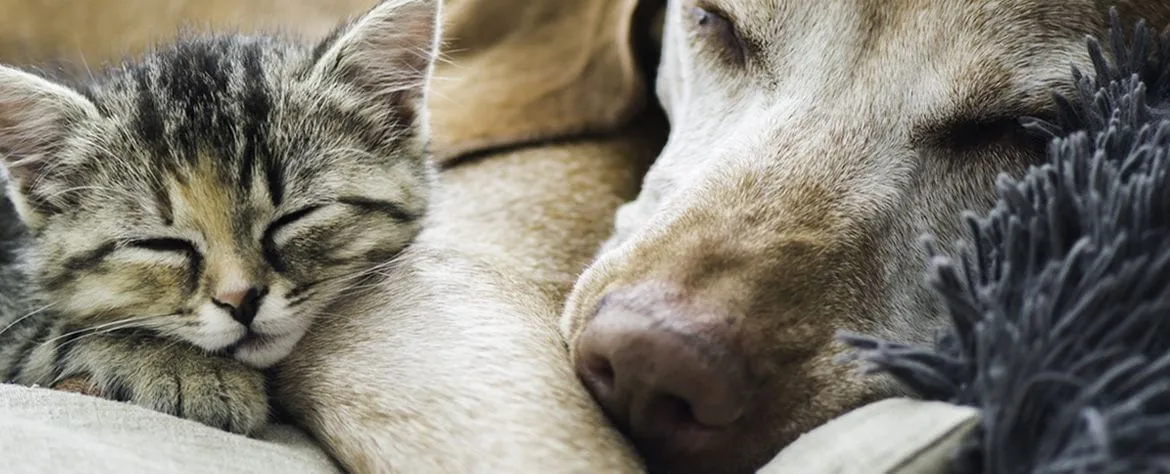
Unlike humans, who use our facial expressions to show emotion, cats communicate their emotions via body language—including wagging their tails.
Position and movement matter when it comes to your cat's tail! It can mean anything from affection and curiosity to uncertainty and aggression. So, context clues play a key role in deciphering cat tail language.
Paying attention to your cat’s tail movements can give you a lot of information about their mood, which makes it easier to support their needs in every situation.
Tail wagging is one important movement to take note of, since it’s not usually a friendly greeting. Rather, your cat may wag their tail—or swish, flick, curl, and whip it—to show irritation.
Here are 17 cat tail positions explained:
Upright and straight: Friendly
Your cat may position their tail straight and upright when you talk to them as a sign of happiness. The higher the tail, the better they feel. You might think of this position as a show of happiness or a friendly greeting. This tail can also mean your cat’s in the mood for some attention.
Low tail flick: Conflicted or agitated
This posture may mean your cat is conflicted, upset, or even getting ready to attack its prey (or toy mouse). Watch out for signs of agitation, including dilated pupils, pinned ears, and tense body posture. If you’re petting your cat and they give a low wag, they may want you to take a step back.
Held low and straight: Poised for action
This means your cat is ready to pounce! A cat’s tail plays an important role in balancing, and a tail extended straight behind them can help them make rapid jumps and swift turns.
Pointing slightly down: Cautious
A tail carried low can indicate that your cat feels concerned, cautious, or possibly aggressive.
Some cat breeds, including Persians, tend to carry their tails naturally low, so it may help to consider other context clues. If your cat isn’t happy, you might also notice their head slightly down and their chin tucked. They may be hesitant to approach or meow nervously.
Held low and curled at the top like a question mark: Hesitant
A low tail that curls up may mean your cat is cautious or unsure about their surroundings. This could happen when they enter a new environment or meet someone for the first time.
Tucked between the legs: Afraid
When your cat tucks their tail between their legs, they’re typically afraid of something in their environment, like another cat, a dog, or maybe even a loud vacuum cleaner. A tail tuck can also be a display of submission to someone more dominant.
In some cases, a tucked tail may mean your cat is in pain, so it may be worth looking for signs of injury, like a limp, abrasion, or swelling. If you have any doubts about your cat’s health, it’s always wise to call a veterinarian.
Pointing up and gently undulating: Curious
Notice your cat’s tail pointing up and gently bouncing? That’s usually a sign of curiosity. Your cat’s tail may give a gentle little wag when they explore new environments or investigate something interesting—like that package you just opened.
Pointing up and curled at the top like a question mark: Playful
This tail position means your cat feels curious, inquisitive, or playful. They may be on high alert, ready to pounce or play at a moment’s notice. Your cat might also feel relaxed and happy when their tail looks like this, and you may notice this posture as they purr or rub against you.
Slow swish: Curious or relaxed
A gently waving tail can mean your cat feels curious or playful. The movement of their tail may be due to the sounds they hear, which triggers their inquisitive behavior. If your cat’s tail slowly swishes when sleeping, they’re likely only partially asleep—as both predators and prey, cats remain in tune with their surroundings even while resting.
Flicking or swishing back and forth: Afraid or playful
A cat’s tail typically swishes back and forth when they feel afraid. That said, this posture can also suggest a playful mood.
Quick thrashing: Annoyed
A thrashing or swiftly wagging tail generally means annoyance or uncertainty. The intensity and force behind their tail movements can offer more clues to their emotional state, but it’s also important to consider your cat’s individual limits.
Upright and quivering: Excited
Usually, this means your cat is really excited to see you, especially if they also purr, rub against you, or give a head butt or two.
In some cases, a quivering tail could suggest anxiety or insecurity. Some male cats—especially unneutered cats—may also have this posture while urine marking.
Wrapped or hooked tail: Affectionate
When a cat wraps their tail around you, it’s a sign of affection and companionship. Sometimes, you may even spot closely bonded cats with their tails entwined.
Wrapped around their own body: Defensive or afraid
If your cat wraps their tail tightly around their body, they may feel defensive or fearful. This tail means they’re attempting to protect themselves from injury.
Puffed up tail: Frightened
When cats get startled or spooked, they’ll puff up their fur to appear larger and more dangerous. This is called piloerection. Your cat may puff just their tail or their entire body, including their face. They might also arch their backs, hiss, growl, and begin backing away with their eyes locked on the threat.
Waving while lying down: Mildly annoyed or dreaming
This tail can mean your cat feels a little irritated with something, but their annoyance hasn’t reached a point where they feel motivated to stand up or move. For example, maybe you have to grab something and ever-so-slightly nudge them from their perfect napping spot on your lap.
Tail tip movements: Content and relaxed
Sometimes you might notice the tip of your cat’s tail moving slowly. This typically means your cat feels content and relaxed.



